My work as a landscape consultant often puts me in a place where I have to answer questions on which plant to put where. And shade loving shrubs are high on that list. Many home gardeners can easily come up with half a dozen full sun shrubs, but shade loving? No. Here in Northeast Kansas, zones 5B, there are 17 shade shrubs that grow well and can handle various types of shade.
Before we even begin to look at the different shrubs, you must know what type of shade it will go into. There are 3 types of shade: full shade, dappled shade, and edge shade. Most of the following shrubs can handle both dappled and edge shade with no ill effects. But only 2 can handle what we call full shade. Full shade gets less than 4 hours of direct sunlight per day.
Dappled shade is where the trees above are less dense in their canopy or where sunlight breaks through the canopy resulting in 4 to 6 hours of sun per day. Edge shade in in nature is the edge of the big woods. These areas receive 4 to 8 hours of sun per day. Most shade loving shrubs will grow in an edge type setting in nature, or a dappled setting in the home garden or landscape.
Full Shade Loving Shrubs
As I said above, for Zone 5B, Northeast Kansas, Southeast Nebraska, and Northern Missouri, there are only 2 shrubs that can handle full shade of less than 4 hours of direct sunlight. These shrubs are native to the woods of North America, one throughout the eastern hardwood forests, and the other from the pine forests of Alabama and Mississippi.
Oakleaf Hydrangea (Hydrangea quercifolia)
There may not be a more versatile and well-loved shrub in the landscape than the hydrangea, and the oakleaf hydrangea is the king of them. It is true that the oakleaf hydrangea can handle full shade, but it also does equally well in part shade and even some full-sun locations. The shade loving ability of this shrub might be the least of its attributes.
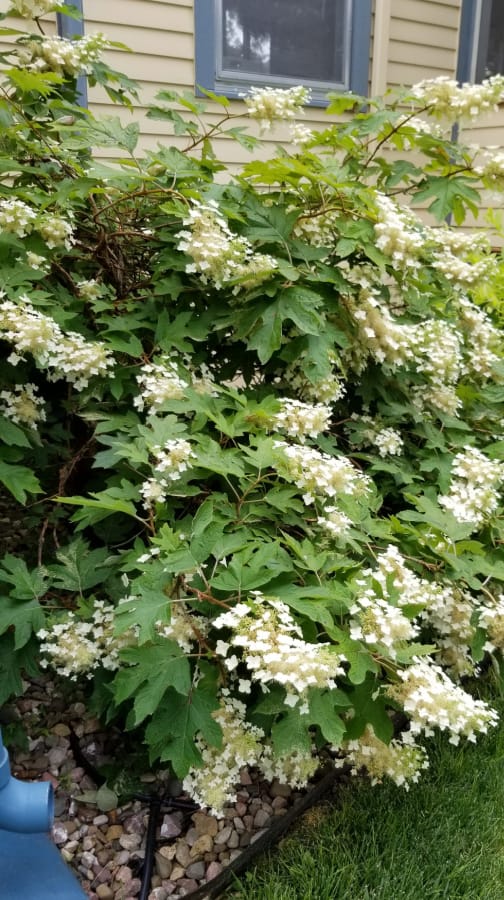
Oakleaf hydrangeas have several features which make them a valuable plant for nearly every full shade to part shade garden spot. Cultivars come in an array of sizes. They have cinnamon-like peeling bark, which is loose but not falling off in strips like the annoying bark of the Chinese Elm which falls off in great chunks.
The flowers of the oakleaf are large panicles that begin creamy white and fade to varying shades of pink, red, or mauve. I have used the dried flowers for floral arrangements. Leaves of the oakleaf look like giant red oak leaves, some as big as 16 inches long and 8 inches wide! In autumn, the leaves turn shades of red, maroon, and purple.
Pests of oakleaf hydrangeas include Japanese beetles (on the flowers mostly) and leafhoppers (not important pests).
Best Cultivars
The main differences between cultivars are overall size. That being said, there are many cultivars to choose from. Check with us online or locally, or your own local nursery for the cultivars they carry.
Gatsby Star is a large shrub, growing 8 feet tall and wide, with star-shaped, bright white flowers.
Alice is an old standard oakleaf, large up to 12 feet tall and wide.
Ruby Slippers is one of my favorites, growing 4 feet tall and 5 feet wide, with white flowers that turn almost red as they fade.
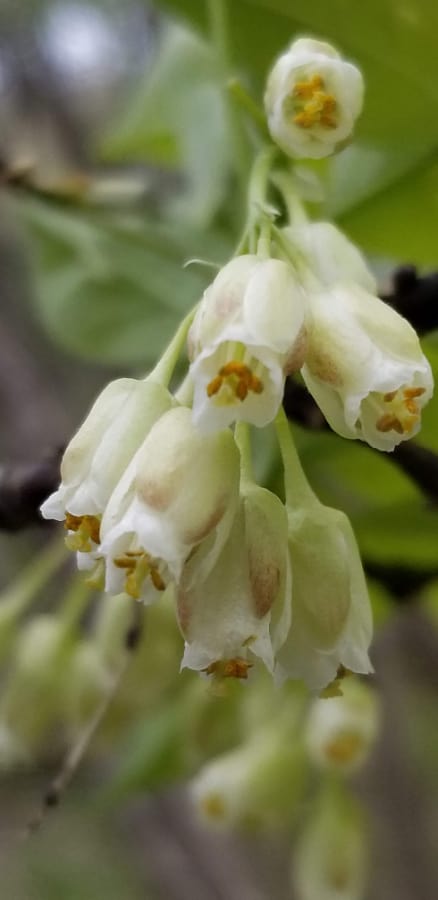
Little Honey is an interesting cultivar from Greenleaf Nursery with chartreuse colored foliage on dwarf stems. It grows 4 feet tall and wide.
American Bladdernut (Staphylea trifolia)
It is hard to describe this shrub? Tree? Although it is one of my favorite native shrubs, the bladdernut is a unique plant that may be difficult to find in the nursery. In the forest, it grows in deep to filtered shade, among hickories, oaks, elms, and ashes. Growing in the eastern hardwood forests of North America, it grows very well in zones 4 to 8.
In full shade, bladdernut grows as the shrub we call it, growing 5 to 10 feet tall and wide. But in more filtered sun or even near full sun, it is a small tree, growing 10 to 15 feet tall and wide. The flowers are the best part of this shrub, besides its ability to grow in deep shade. They are bell-shaped, hanging upside-down in clusters.
Seedpods of this shade loving shrub give it its name. They resemble a 3 sided bladder, hanging from the tree, and being useful in flower arrangements. There are no major pests or diseases affecting the bladdernut.
Edge Shade Loving Shrubs
Growing up in Central Kansas, I never really knew what true shade was. We had shade, but it was from alien plants like Norway maple, Scots pine, and hybrid willows. What we called woods, was not. The area I grew up in was originally prairie with creek bottoms containing some cottonwood, hackberry, red elm, wild plum, and roughleaf dogwood. I did not see real forests until travelling out of state.
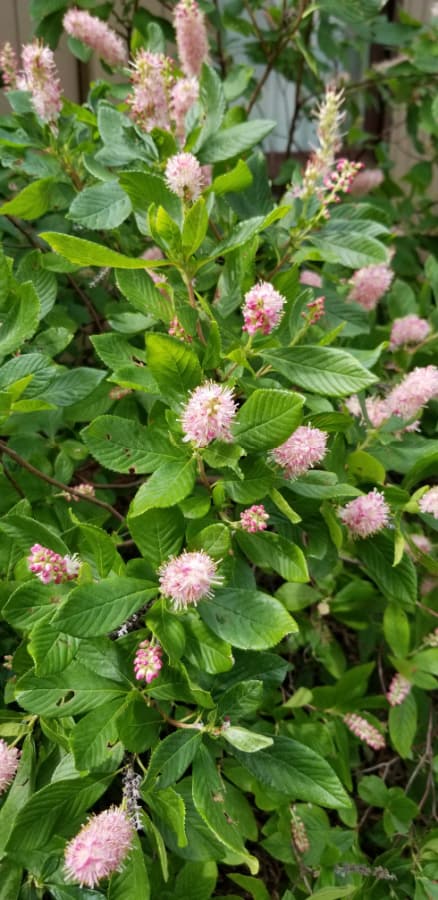
But here in the Northeast corner of Kansas, I live adjacent to an oak-hickory forest remnant. And I can drive 25 minutes to real forest. Learning about the shade loving shrubs, trees, and herbaceous plants has been quite the experience. In my own gardens, I use a variety of the following shade loving shrubs among the oaks, hickories, and walnuts of my wooded property.
Summersweet (Clethra species)
One of the most fragrant of all shrubs, summersweet thrives on the edge of shade. I even have one customer who has some in near full shade, that blooms steadily each summer. Summersweet, also called sweet pepperbush, grows natively across the southeastern U.S., in swampy and boggy ground. Generally, summersweet grows 4 to 8 feet tall and wide, in ever-spreading groves or thickets.
Several cultivars of summersweet have been selected for various sizes and flower colors. Fall color on summersweet if red or orange and there are no major pest or disease issues.
Ruby Spice is one of the most common cultivars. It has pink flowers and grows 6 feet tall by 5 feet wide in the garden.
Vanilla Spice is a Proven Winners selection that has bright, crystal white flowers on 6 foot tall and wide plants.
Doublefile Viburnum (Viburnum plicatum tomentosum)
The doublefile viburnum is our first nonnative species of shade loving shrubs. From Asia, this large shrub to small tree has been a staple in the landscape for years, though it is starting to fall away in some areas because of invasiveness. However, here in the Central Great Plains region, I have not seen it become a problem.
While both of the doublefiles in my garden are seedlings, neither of them have produced any seedlings of their own. And the rarely set fruit. I like doublefile viburnums because they have an open, lateral branching shape. Also, it has maroon to purple fall color, and flat, umbel-shaped flowers that are attractive to pollinators.
There are several varieties of doublefile viburnum available for a variety of situations, but the species grows 10 to 15 feet tall and wide. I have not observed any major issues or pests in my experience with this shrub.
Marie’s Doublefile grows similar to the species in size and habit, with large white flowers.
Summer Snowflake is more upright, growing 8 feet tall by 4 to 6 feet wide, and blooms sporadically all summer lone, instead of just once in the spring.
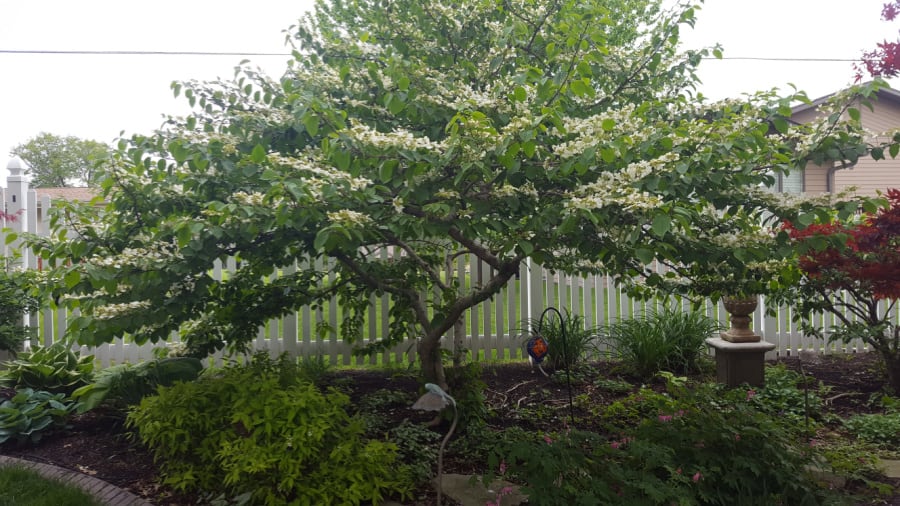
Fothergilla
I have heard but few common names for this wonderful, shade loving shrub. Witch-alder or bottlebrush shrub are the most common. But I just go with fothergilla. There are 2 species of fothergilla, native to the southeastern U.S., but which are mostly rare in their native ranges. Most fothergillas are found in nurseries and home landscapes now.
In the landscape, fothergilla is a wonderful shrub that has blue-green leaves that turn shades of apricot, orange, and red in autumn. In spring, fragrant white flowers that look like bottlebrushes. The scent is similar to vanilla.
If they get too much sun, especially late afternoon sun, fothergillas get burnt edges on the leaves (scorch). There are several great cultivars for the landscape.
Legend of the Fall is a Proven Winners cross that grows 5 feet tall and wide with an array of mixed fall colors including orange, apricot, maroon, red, and purple.
Mt. Airy is an old standard cultivar that grows 5 feet tall and wide.
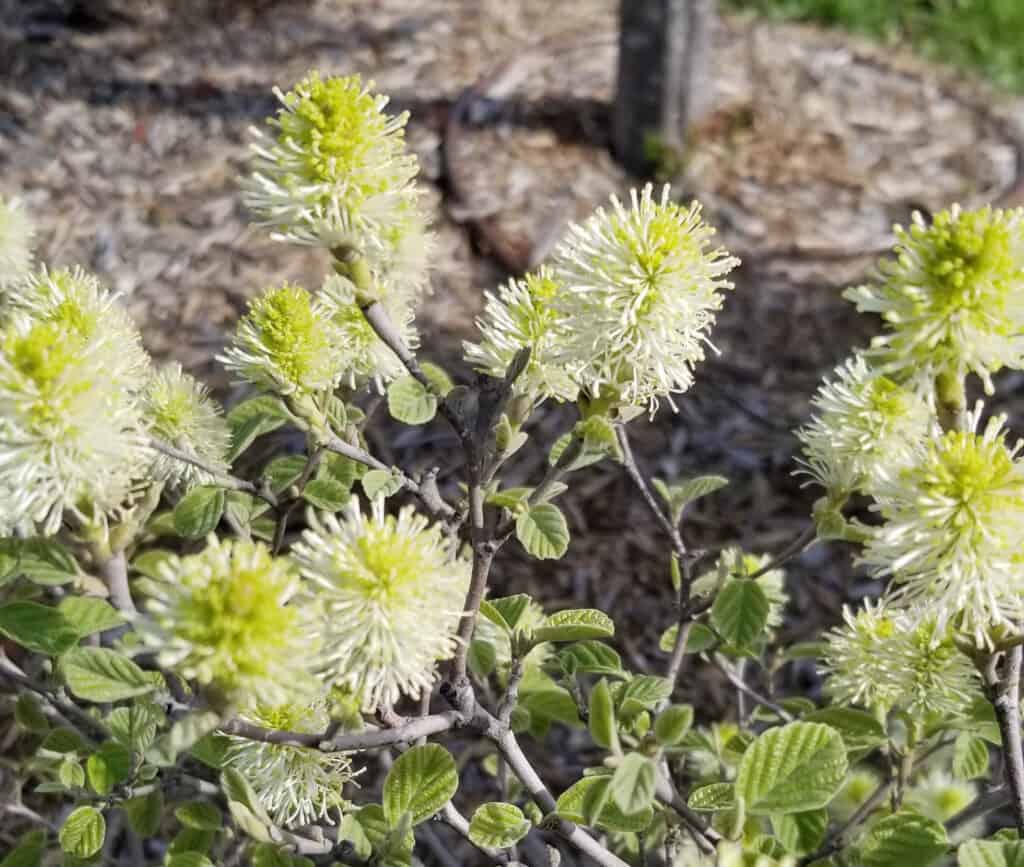
American Hazelnut (Corylus americana)
Who knew a nut producing shrub would like shade? Well, the American hazelnut natively grows along woodland edges, throughout much if eastern North America. Even here in Kansas, I know of several large hazelnut shrubs, in ditches and along wooded areas. The hazelnut can grow to be a large thicket-forming shrub, sometimes as tall as 15 feet and as long as 30 feet!
The hazelnut produces catkins in spring which are followed by 1/2 inch to 1 inch sized nuts that are quite delicious to eat. Fall color may be yellow, but is generally brown. Hazelnuts are grown primarily for their ability to attract wildlife via their nuts, not for general landscape qualities. However, edibles can and should be included in landscape planning.
Prickly-Ash (Zanthoxylum americanum)
While not a true ash, the prickly-ash is a shade loving shrub with leaves that resemble ash trees. These little-known shrubs can be found in many wooded and forested edge areas. Prickly-ash forms a small shrub, 4 to 8 feet tall and wide. They have small thorns along the stems and interesting, red fruit in late summer.
The stems of the prickly-ash contain a chemical compound that when chewed on, makes your mouth numb. That is the reason they are also called the toothache plant. One of the best reasons to grow prickly-ash in your shade garden is that it is a host for the giant swallowtail butterfly.
Spicebush (Lindera benzoin)
Native to eastern hardwood forests, the spicebush is most often known for hosting the spicebush swallowtail butterfly. Spicebush has small yellow flowers and red, edible fruits. But the plant is dioecious, meaning that it has male and female flowers on separate plants. Fall color is pure yellow, and very consistent each year.
In my own garden, I look forward to the bright yellow flowers of my spicebush, because they are one of the first plants to bloom in early spring. Spice bush grows 6 to 10 feet tall and wide throughout its native range, as well as in landscapes. Spicebush is a good plant for a shady rain garden, as it can handle temporary standing water, but also drought in between rains.
Wahoo (Euonymus atropurpureus)
What a name, right? The wahoo is a North American native replacement for the invasive burning bush (Euonymus alatus). While the burning bush is slowly becoming a hated plant in the woodlands of the Eastern U.S., the wahoo is quietly becoming its replacement. But why did we not just plant the wahoo instead?
The wahoo can be pruned similarly to a burning bush, and the fall color is just as brilliant red. The maroon flowers are prettier, though just as stinky. Wahoo grows 10 to 25 feet tall and wide, though they can be pruned to keep their size smaller, as low as 6 feet tall and wide.
Pest problems include euonymus scale, aphids, and whiteflies, just like other euonymus in the garden.
Spikenard (Aralia species)
Both American and Japanese spikenard are good edge of the woods, shade loving shrubs. They almost do not fall into the shrub category though; being more similar to herbaceous perennials. But in the shade garden, both native and alien spikenards grow well in dappled to edge shade. American spikenard grows 4 to 6 feet tall and wide, and can be found along stream edges under dappled shade.
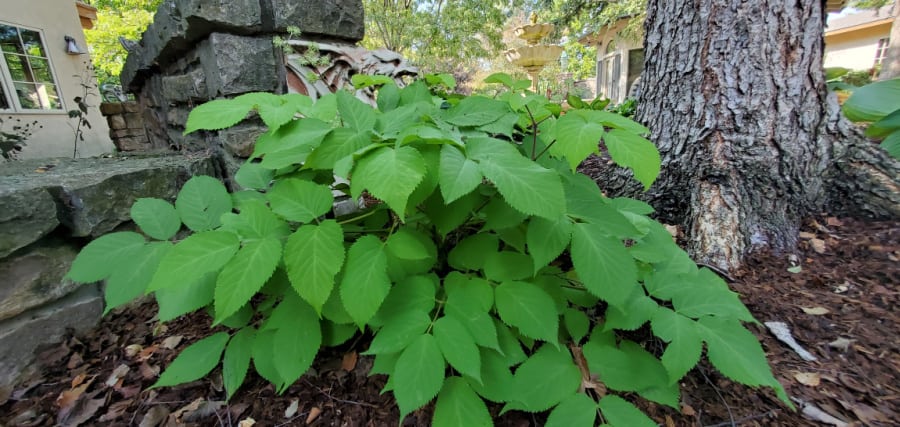
Japanese spikenard is best known for its cultivar, Sun King, which has chartreuse colored leaves and is a standout in the shade garden. It grows 3 feet tall and wide with spikes of airy white flowers, followed by black berries which birds consume.
Bush-Honeysuckle (Diervilla lonicera)
One of the most interesting shade loving shrubs I learned about in college, some 15 years ago, is the bush-honeysuckle. The flowers, which do resemble a honeysuckle, are bright yellow and attractive to hummingbirds, butterflies, moths, and long-tongued bees. Bush-honeysuckle grows in small, short thickets, similar to sweetspire (Itea), in both full sun and edge of the woods shade.
In recent years, many cultivars have emerged in the nursery, looking for foliage and fall colors. Fall colors can be red, maroon, or even purple. Bush-honeysuckle is a tough shade shrub, that can grow in a variety of conditions, from zones 5 to 7 for most cultivars, while the native plant can grow as low as zone 3.
Kodiak series from Proven Winners includes black, red, and orange, for their differing summer leaf foliage.
Sweetspire (Itea virginica)
As mentioned above, sweetspire, which grows in part to full sun, or dapple shade, grows as a short running thicket. Sweetspire is native to the southeastern U.S., but grows well in zones 4 to 8. It reaches maturity around 5 to 6 feet tall and wide, but will continue getting wider. The flowers of sweetspire hang down like white icicles in spring and are very fragrant.
In autumn, the leaves of the sweetspire turn shades of maroon and purple. Because of its thicket-forming capabilities, sweetspire becomes a nesting spot for birds, similar to a brush pile. Cultivars are selected for size and flower power.
Little Henry is a standard cultivar that matures at 3 feet tall and wide.
Henry’s Garnet is another old variety that grows 4 feet tall and 6 feet wide.
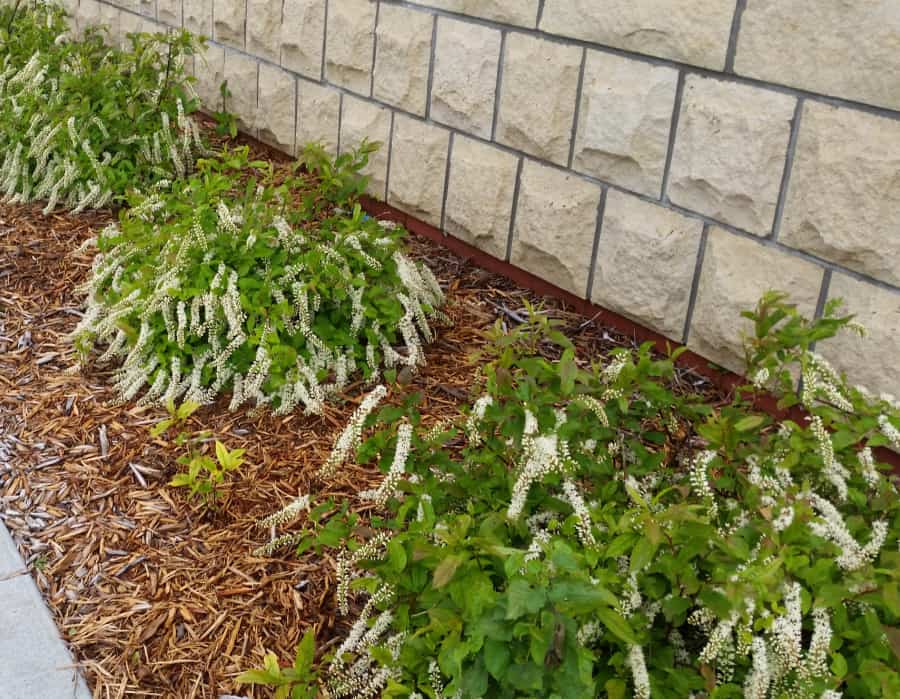
Nannyberry (Viburnum lentago)
Native to northern 1/3 of the United States, nannyberry is so called because nanny goats like to eat the berries and stems. As far as viburnums go, this is one of my favorites. It does best in full sun, but grows very well in edge shade. I have one in full sun, one in part sun (6 hours of sun), and one in dappled shade (4 to 6 hours of sun), and they all are doing equally well.
Nannyberry has edible fruits, which are blue-black when ripe. Fall color is red to orange, which seems brighter on the shiny leaves. Plants grow 15 to 25 feet tall and wide, and can be useful for large screens or hedges. One customer has a nannyberry hedge 15 feet tall and 100 feet long. The only problem I have seen on nannyberry is powdery mildew, and only in extremely wet seasons.
Blackhaw Viburnum (Viburnum prunifolium)
Found growing in the hardwood forests of the Eastern United States, blackhaw is an edge of the woods shrub that can also grow in full sun. It has shiny green leaves and grows 12 feet tall and wide. White flowers in spring give way to dark blue, edible berries in late summer. The fall foliage is brilliant red and sometimes orange.
Several moths and the spring/summer azure butterfly use native viburnums as host plants and early moths and butterflies visit the flowers for nectar. In the garden, blackhaw can be used as a single specimen or as a hedge, as it is easy to prune and shape.
Boxwood (Buxus species)
You need to have some evergreen shade loving shrubs right? Yes, of course. In the past, my dislike of boxwood had clouded my judgement of it as a plant. But what I really dislike about it is its overuse and sheared look in the landscape. If boxwoods are grouped with other shade plants and left to grow naturally, I really do like the way they look.
Boxwoods prefer to be in part shade, especially when younger, though many landscapers throw them into full sun and then wonder why 2 out of 3 die. But, if properly placed, and not over planted, I would recommend boxwoods. Plus, there is the advantage of using boxwood clippings for holiday wreathmaking.
Pest problems for boxwoods include boxwood blight, spider mites, and scorch.
Grape-Holly (Mahonia species)
Native to the western United States, grape-holly is not a true holly species, but a pseudo species. It certainly looks like holly, except the fruit it blue-black instead of red. The flowers are much showier too than true hollies. Here in the Central Great Plains, Oregon grape-holly, Mahonia aquifolium, grows well in dappled shade in zones 5 to 7.
The leaves are not truly evergreen, turning a rusty green color in autumn and through winter. New leaves emerge in spring and replace the previous year’s leaves. Bright yellow flowers in large clusters bloom in early spring and are pollinated by bees and flies, mainly.
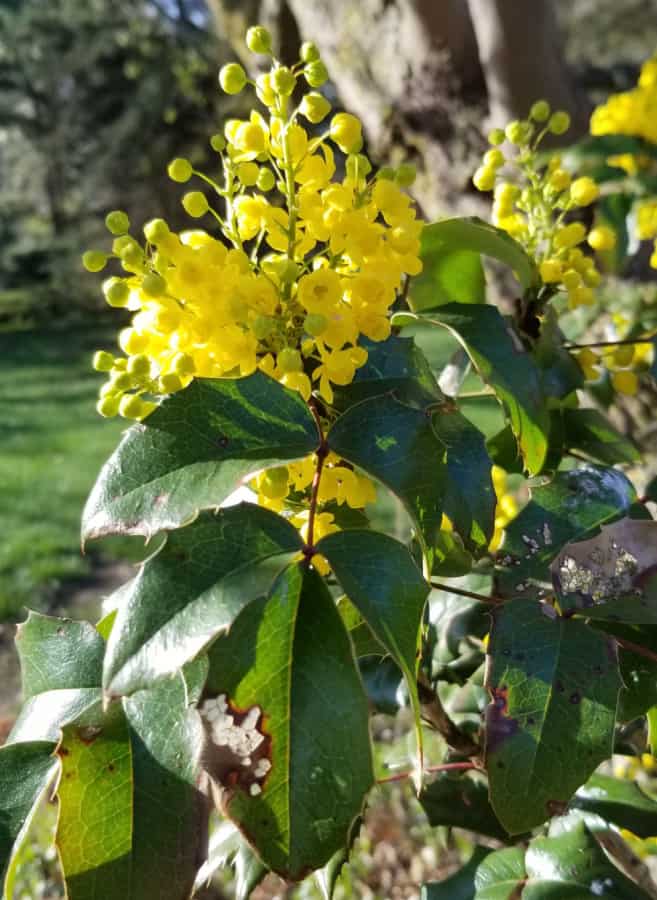
Yew (Taxus species)
The yew is one of the most widely used evergreens in American landscapes and gardens. And yet, I do not feel as if it is as overused as the boxwood is. Maybe this is because there are so many different yew cultivars with varying shapes and sizes. In my own garden, I have both a spreading and upright yew. I like them for part shade or full sun.
The yew has dark green leaves and is easy to prune or shape, though I prefer to let them grow to how they want to look. Red berries are poisonous, so be aware of them if planted where little kids are.
Conclusion
There are a variety of shade loving shrubs for every shade garden. Native or nonnative, deciduous or evergreen. First, learn what kind of shade you have, then pick your shrubs. Shrubs can be used as hedges, screens, backdrops, specimens, or just mixed in under trees and among perennials.
Happy planting!
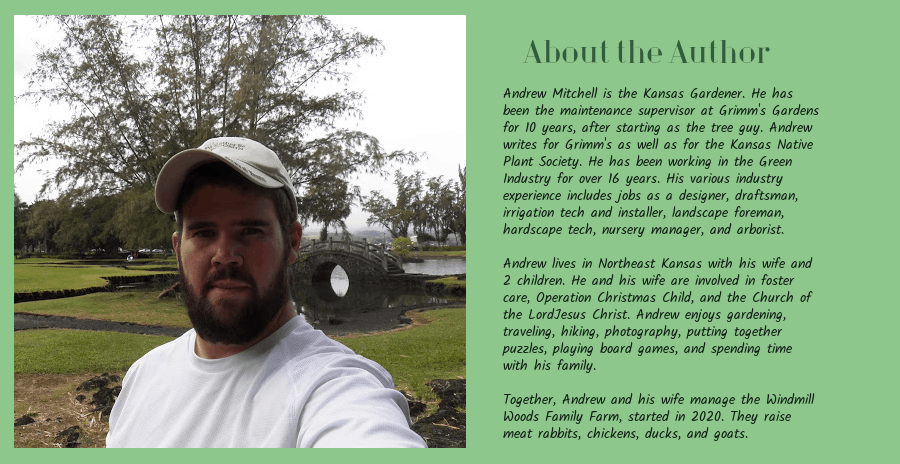
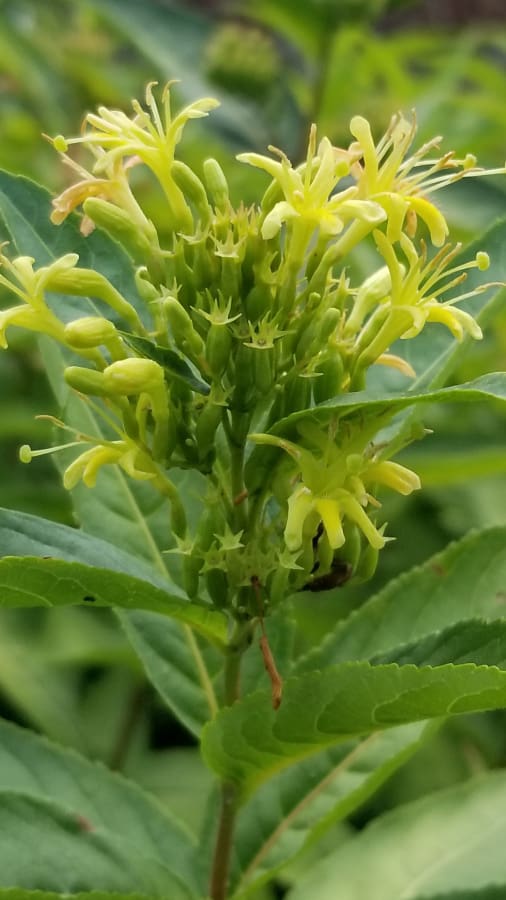



Thanks, Andrew, great post. You have given me some excellent ideas for a couple difficult spots in my yard.
Thank you for sharing the facts about shade loving bushes. With 2 big old sycamore trees & 1 big old birch tree shading our front & north yards & a big old birch shading our east side, we have a lot of shade! Deep shade in the summer. We just had a big ornamental pear removed from our SE side because it was 40 yrs old & losing branches. So the edge of woods & deep shade bushes are very interesting. It was nice you included pictures of some of the bushes. I appreciate your sharing your knowledge!! Thank you!!